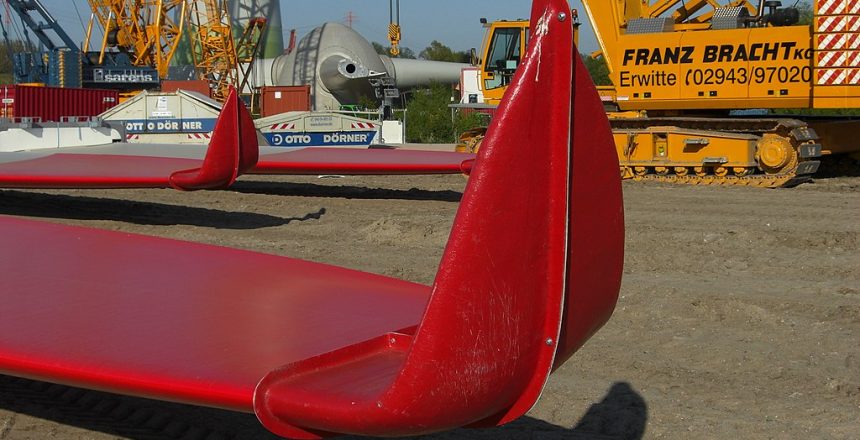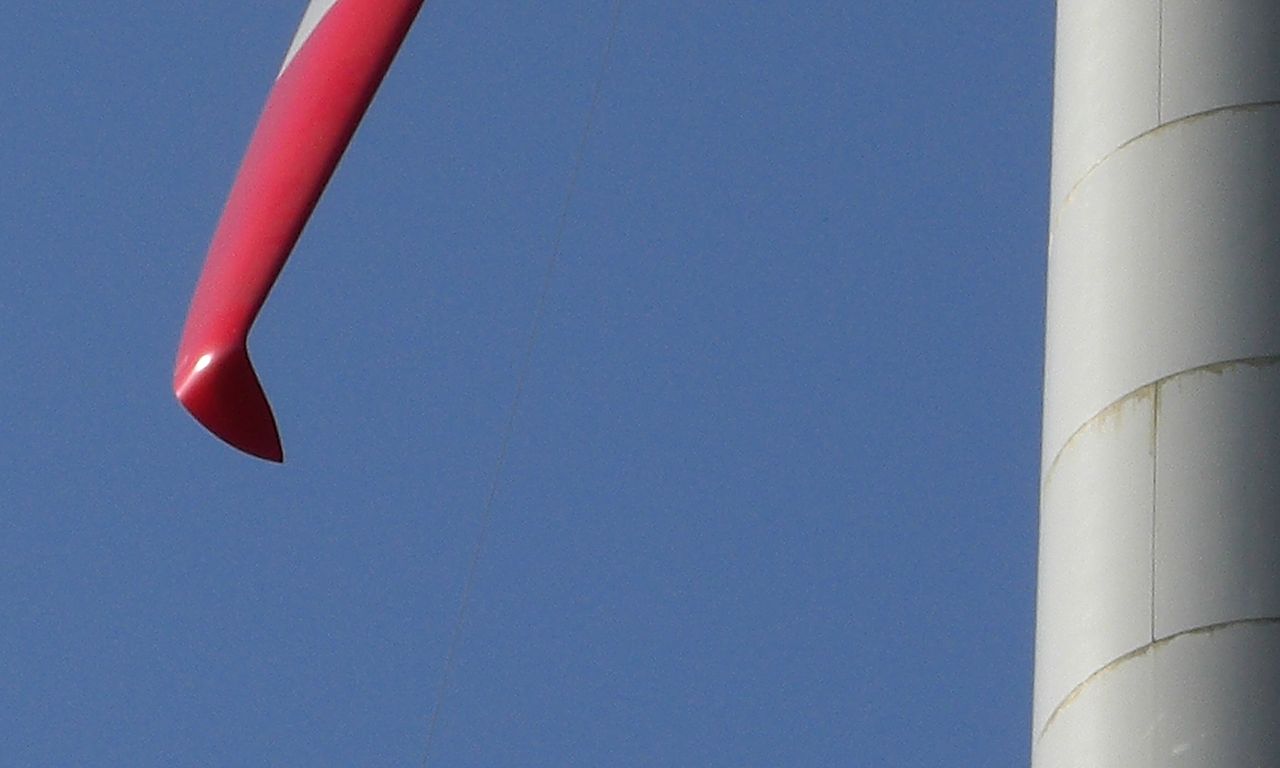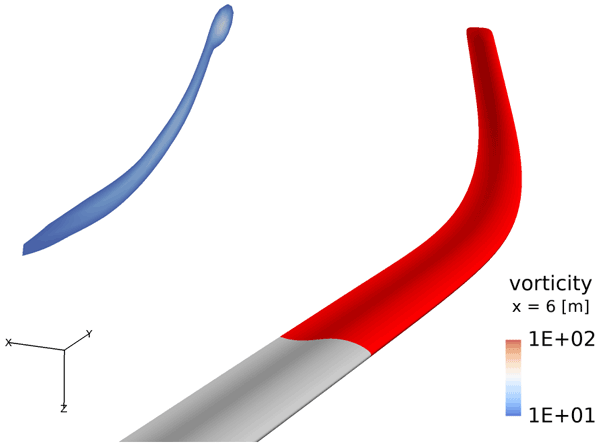Welcome to DU!
The truly grassroots left-of-center political community where regular people, not algorithms, drive the discussions and set the standards.
Join the community:
Create a free account
Support DU (and get rid of ads!):
Become a Star Member
Latest Breaking News
Editorials & Other Articles
General Discussion
The DU Lounge
All Forums
Issue Forums
Culture Forums
Alliance Forums
Region Forums
Support Forums
Help & Search
Environment & Energy
Related: About this forumWind turbines based on condor wings could capture more energy
https://www.newscientist.com/article/2427062-wind-turbines-based-on-condor-wings-could-capture-more-energy/Wind turbines based on condor wings could capture more energy
Curved wing tips inspired by the world's heaviest flying bird could enhance the efficiency of wind turbines by of 10 per cent, according to simulations
By James Woodford
19 April 2024

A curved tip, or winglet, for a wind turbine blade, based on the shape of condor wings
Khashayar Rahnamaybahambary
A design modification inspired by the wings of the Andean condor could increase the energy generated by wind turbines.
Various bird species have upturned tips on the end of their wings, which help maximise lift. Similar features, known as winglets, are commonly used on aircraft wings, but haven’t been tested on the giant turbine blades used in power generation.
Khashayar Rahnamaybahambary at the University of Alberta in Canada says gathering experimental data on winglet-equipped wind turbines is very difficult because of their size.
His team designed winglets based on the world’s heaviest flying bird, the Andean condor, which can cover vast distances despite weighing as much as 15 kilograms.
[...]
Curved wing tips inspired by the world's heaviest flying bird could enhance the efficiency of wind turbines by of 10 per cent, according to simulations
By James Woodford
19 April 2024

A curved tip, or winglet, for a wind turbine blade, based on the shape of condor wings
Khashayar Rahnamaybahambary
A design modification inspired by the wings of the Andean condor could increase the energy generated by wind turbines.
Various bird species have upturned tips on the end of their wings, which help maximise lift. Similar features, known as winglets, are commonly used on aircraft wings, but haven’t been tested on the giant turbine blades used in power generation.
Khashayar Rahnamaybahambary at the University of Alberta in Canada says gathering experimental data on winglet-equipped wind turbines is very difficult because of their size.
His team designed winglets based on the world’s heaviest flying bird, the Andean condor, which can cover vast distances despite weighing as much as 15 kilograms.
[...]
4 replies
 = new reply since forum marked as read
Highlight:
NoneDon't highlight anything
5 newestHighlight 5 most recent replies
= new reply since forum marked as read
Highlight:
NoneDon't highlight anything
5 newestHighlight 5 most recent replies
Wind turbines based on condor wings could capture more energy (Original Post)
sl8
Apr 2024
OP
Adding Winglets On Wind Turbine Blades: Worth The Retrofit Costs? September 14, 2020
mahatmakanejeeves
Apr 2024
#4
rubbersole
(9,647 posts)1. Uh, oh...
...don't let tsf hear about this. He'll give a rally decrying condors. "Big birds, strong birds with tears running down their beaks...."
twodogsbarking
(13,242 posts)2. What about the Albatros.
Albatrosses are masters of soaring flight, able to glide over vast tracts of ocean without flapping their wings. So fully have they adapted to their oceanic existence that they spend the first six or more years of their long lives (which last upwards of 50 years) without ever touching land.
mopinko
(72,214 posts)3. i cant believe it took this long.
maybe engineers shd have to take more biology. a&p, for instance.
and art.
mahatmakanejeeves
(64,198 posts)4. Adding Winglets On Wind Turbine Blades: Worth The Retrofit Costs? September 14, 2020
i cant believe it took this long.
It didn't.
https://www.google.com/search?q=wind+turbine+blades+curved+tip
Adding Winglets On Wind Turbine Blades: Worth The Retrofit Costs?
September 14, 2020

Should wind farm operators install winglets on wind turbine blades? Is this a worthwhile retrofit to improve efficiency and power output? In this article, we’ll discuss the aerodynamic properties of wind turbine blades and whether or not winglets make financial sense as an upgrade on wind farms.
First: What Is a Wind Turbine Winglet?
Winglets are curvatures in the tip of a wing or blade. The vast majority of wind turbine blades feature straight blade tips, but as engineers look for more ways to improve efficiency, factories are beginning to produce turbine blades with winglets. Additionally, some wind farm operators who already have a straight-blade turbines are hiring maintenance companies to retrofit winglets onto their existing machines.

TraceyR / CC BY-SA (https://creativecommons.org/licenses/by-sa/3.0)
{snip}
September 14, 2020

Should wind farm operators install winglets on wind turbine blades? Is this a worthwhile retrofit to improve efficiency and power output? In this article, we’ll discuss the aerodynamic properties of wind turbine blades and whether or not winglets make financial sense as an upgrade on wind farms.
First: What Is a Wind Turbine Winglet?
Winglets are curvatures in the tip of a wing or blade. The vast majority of wind turbine blades feature straight blade tips, but as engineers look for more ways to improve efficiency, factories are beginning to produce turbine blades with winglets. Additionally, some wind farm operators who already have a straight-blade turbines are hiring maintenance companies to retrofit winglets onto their existing machines.

TraceyR / CC BY-SA (https://creativecommons.org/licenses/by-sa/3.0)
{snip}
Articles
Volume 7, issue 4
WES, 7, 1471–1501, 2022
https://doi.org/10.5194/wes-7-1471-2022
© Author(s) 2022. This work is distributed under the Creative Commons Attribution 4.0 License.
Research article | 18 Jul 2022

CFD-based curved tip shape design for wind turbine blades
Mads H. Aa. Madsen, Frederik Zahle, Sergio González Horcas, Thanasis K. Barlas, and Niels N. Sørensen
Abstract
This work presents a high-fidelity shape optimization framework based on computational fluid dynamics (CFD). The presented work is the first comprehensive curved tip shape study of a wind turbine rotor to date using a direct CFD-based approach. Preceding the study is a thorough literature survey particularly focused on wind turbine blade tips in order to place the present work in its context. Then follows a comprehensive analysis to quantify mesh dependency and to present needed mesh modifications ensuring a deep convergence of the flow field at each design iteration.
The presented modifications allow the framework to produce up to six-digit-accurate finite difference gradients which are verified using the machine-accurate Complex-Step method. The accurate gradients result in a tightly converged design optimization problem in which the studied problem is to maximize power using 12 design variables while satisfying constraints on geometry, as well as on the bending moment at 90?% blade length.
{snip}
Volume 7, issue 4
WES, 7, 1471–1501, 2022
https://doi.org/10.5194/wes-7-1471-2022
© Author(s) 2022. This work is distributed under the Creative Commons Attribution 4.0 License.
Research article | 18 Jul 2022
CFD-based curved tip shape design for wind turbine blades
Mads H. Aa. Madsen, Frederik Zahle, Sergio González Horcas, Thanasis K. Barlas, and Niels N. Sørensen
Abstract
This work presents a high-fidelity shape optimization framework based on computational fluid dynamics (CFD). The presented work is the first comprehensive curved tip shape study of a wind turbine rotor to date using a direct CFD-based approach. Preceding the study is a thorough literature survey particularly focused on wind turbine blade tips in order to place the present work in its context. Then follows a comprehensive analysis to quantify mesh dependency and to present needed mesh modifications ensuring a deep convergence of the flow field at each design iteration.
The presented modifications allow the framework to produce up to six-digit-accurate finite difference gradients which are verified using the machine-accurate Complex-Step method. The accurate gradients result in a tightly converged design optimization problem in which the studied problem is to maximize power using 12 design variables while satisfying constraints on geometry, as well as on the bending moment at 90?% blade length.
{snip}
Wind Turbine Blade-Tip Optimization: A Systemic Computational Approach
by Panagiotis Zouboulis 1,Elias P. Koumoulos 2ORCID andAnna Karatza 1,*ORCID
1 BIOG3D P.C., Technological & Cultural Park of Lavrion, 1 Lavriou Ave., 19500 Lavrion, Greece
2 IRES—Innovation in Research and Engineering Solutions, Rue Koningin Astridlaan 59B, 1780 Wemmel, Belgium
* Author to whom correspondence should be addressed.
Processes 2023, 11(4), 1170; https://doi.org/10.3390/pr11041170
Submission received: 6 March 2023 / Revised: 28 March 2023 / Accepted: 5 April 2023 / Published: 11 April 2023
(This article belongs to the Special Issue New Advancement of Computational Fluid Dynamics Modeling on Sustainable Renewable Energy Applications)
{snip}
by Panagiotis Zouboulis 1,Elias P. Koumoulos 2ORCID andAnna Karatza 1,*ORCID
1 BIOG3D P.C., Technological & Cultural Park of Lavrion, 1 Lavriou Ave., 19500 Lavrion, Greece
2 IRES—Innovation in Research and Engineering Solutions, Rue Koningin Astridlaan 59B, 1780 Wemmel, Belgium
* Author to whom correspondence should be addressed.
Processes 2023, 11(4), 1170; https://doi.org/10.3390/pr11041170
Submission received: 6 March 2023 / Revised: 28 March 2023 / Accepted: 5 April 2023 / Published: 11 April 2023
(This article belongs to the Special Issue New Advancement of Computational Fluid Dynamics Modeling on Sustainable Renewable Energy Applications)
{snip}